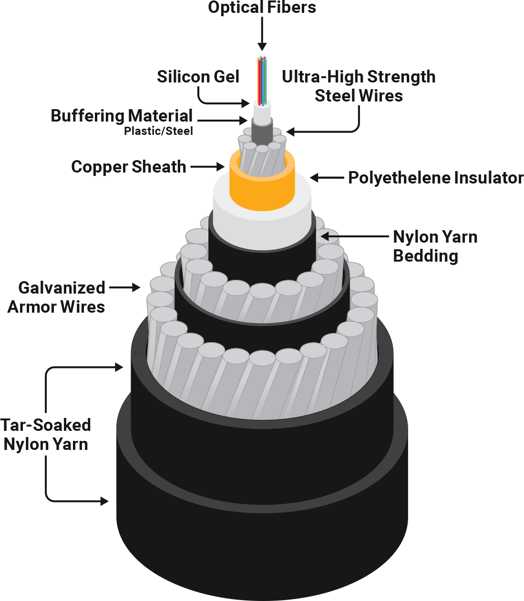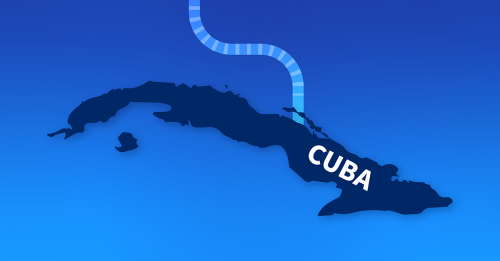Diving Deep into Submarine Cables: The Undersea Lifelines of Internet Connectivity


Fiber opticsSubmarine cable structureCable landing stationsThe environmentHuman activityPeople working togetherWho owns the cables?Submarine cable oversightThe economics of submarine cablesOwnership and investmentMajor submarine cable fabricatorsThe future of submarine cablesSDM and MulticoreConclusion
Summary
Under the waves at the bottom of the Earth’s oceans are almost 1.5 million kilometers of submarine fiber optic cables. Going unnoticed by most everyone in the world, these cables underpin the entire global internet and our modern information age. In this post, Phil Gervasi explains the technology, politics, environmental impact, and economics of submarine telecommunications cables.
Worldwide telecommunications began somewhere around 150 years ago, in 1850, with the first commercial international submarine cable between England and France. A few years later, by 1858, the first trans-Atlantic telegraph cable connected London with North America when 143 words were transmitted in about 10 hours.
Today, the United States’ financial and military command systems rely on global submarine cables. Trillions of dollars of daily transactions mean the entire global economy depends on submarine cables. Access to information for people around the world is dependent on submarine cables.
The infrastructure underpinning this incredible advancement in the transfer, availability, and access to information around the world is made almost entirely of submarine telecommunications cables running hundreds or thousands of meters below the waves on the ocean floor.

TeleGeograpy’s interactive map explores the world’s system of undersea fiber optic cables crossing oceans and following the coast of entire continents. And in a recent episode of Telemetry Now, Alan Mauldin, Research Director for TeleGeography, explained that the world of submarine cables is about politics, money, the environment, global commerce, and of course, moving data vast distances across a wire.
This post will explore some of these areas starting with the technology itself.
Fiber optics
The submarine cables that move internet traffic around the world are made from silica glass fiber optic strands that most network engineers are likely familiar with. However, submarine cables need to allow light to travel very long distances with minimal attenuation, so the G.654 subset of fiber is used for undersea applications.
The cables make use of Dense Wavelength Division Multiplexing (DWDM) to move large amounts of data by allowing different data streams in the form of multiple wavelengths of light to be sent simultaneously over a single fiber infrastructure. In the image below, notice how DWDM technology will take multiple data streams operating at different wavelengths and combine them for transport on a single optical fiber.

Submarine optical fibers are typically G.654A-D, meaning they are single mode and have better attenuation than most common land-based fiber optic cable types. G.654E fibers are in the same family of fibers but are typically used for more unique land-based applications requiring an even lower loss fiber.

Low attenuation, or low signal loss, is important since crossing oceans means light will be traveling considerable distances. G.654 compliant fibers have a zero-dispersion wavelength at about 1300nm and are optimized for use in the 1500 nm-1600 nm range. Attenuation is in the range of 0.15db/km-0.17db/km, which means there is very little loss over long distances. However, attenuation is not zero, so the signal does need to be repeated or amplified at prescribed points in the path of very long cables.
The amplifiers, sometimes called repeaters, are installed inline as part of the cable to restore the signal. These amplifiers are placed about every 70 km or so to enable the signal to travel vast distances while maintaining signal integrity.
Most submarine cables are powered with about 20k volts from both ends. Each power source powers half of the inline amplifiers. If power is lost from one end, the other power source can power the amplifiers throughout the cable until the power issue is resolved.
The image below is of a typical submarine cable amplifier, though they can vary in size.

Submarine cable structure
A submarine cable is made up of several layers. Submarine cables are typically composed primarily of marine-grade polyethylene with steel strength members, copper conductors, and a glass fiber core.
At the core are the silicon glass optical fibers themselves, each of which is not much thicker than a human hair. Surrounding the fibers are various layers of protection and insulation.
The total thickness of a submarine cable without additional protective armor is only about that of a garden hose, approximately 20mm. The cable could be 50mm or more with the additional protective armor, depending on the application. The outermost armor layer protects the cable in the harsh environment at the bottom of the ocean.
Data transfer rates vary among the approximately 550 active cables running along the ocean floor. Because submarine cables are designed with a 25-year life expectancy in mind, some active cables are already two decades old and support a lower data transfer rate compared to one of the newer cables, the MAREA cable, laid in 2018 over 6,600km long, and with a transfer rate of 224Tbps.
When cables reach the end of their lifespan due to economic or technical reasons, they could be simply left unused on the ocean floor, repurposed in some way, or salvaged for raw materials.
There are approximately 1.4 million kilometers of active submarine cables in the world today. They vary in length from short spurs only a few kilometers long to long-distance cables such as the recently installed 2Africa cable at 45,000 km long. The 2Africa cable will connect 34 countries in three different contents and will be fully operational in 2024.
Some larger three-core power cables may also have some fiber strands to carry communication traffic. Still, dedicated communication submarine cables are generally much smaller, varying in size based on the amount of protective armor.
Cable landing stations
Ultimately, submarine cables lay on the ocean floor with terminations, or landings, on either end with the possibility for spurs along the path.
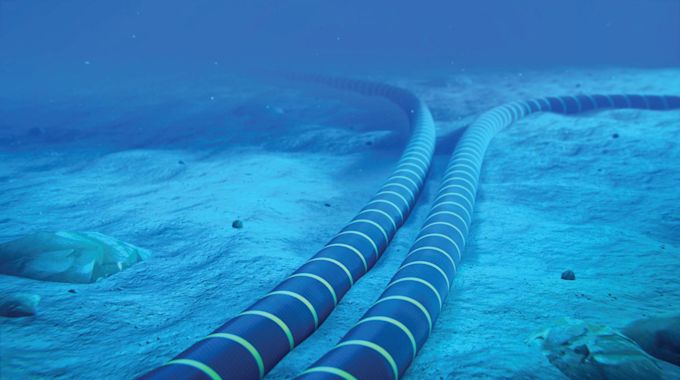
A cable landing station, or CLS, is chosen because the location typically has less marine traffic than much busier port cities. This piece of cable infrastructure is a critical component of the entire system as it serves as the point at which the cable makes landfall and transitions from under the water (wet) to land (dry).
The CLS is where the cable connects to land-based power and various networking provider infrastructure. A CLS could be a small, nondescript building in a small coastal town or part of a much larger data center. In either case, they are often secure facilities.
The environment
Since submarine (telecommunication) cables have a small footprint compared to much larger power cables and gas pipelines, their impact on the environment is minimal. In fact, when properly installed, a submarine cable will actually serve as a new marine ecosystem substrate within just a few months of installation. The area around certain sections of cables is dedicated cable protection zones which often also turn into marine wildlife sanctuaries as a side-effect.
Notice the cable in the image below encrusted with marine organisms.
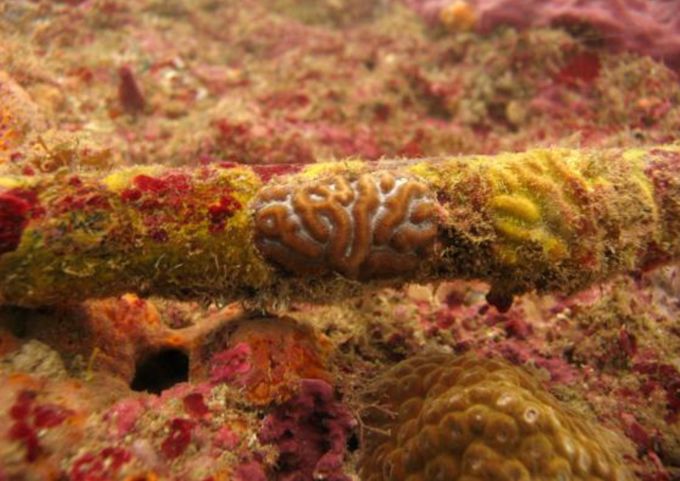
Cable faults rarely occur due to marine life, such as shark bites or whale entanglements. The last reported incident of a submarine communication cable being damaged by a marine organism was from the mid-1980s when a damaged cable was recovered near the Canary Islands with shark bite marks on the cable itself.
As a result, cable armor has improved, and laying techniques have changed such that there is no evidence at all of any damage to a submarine cable due to any type of marine organism (including sharks) since then.
However, the environment does affect submarine cables in other ways. The ocean floor is inherently a harsh environment, and the naturally occurring activity at great depths, sometimes thousands of meters deep, can adversely affect the integrity of the cable structure.
Undersea current abrasion, weather events such as hurricanes, earthquakes, volcanoes, and other natural phenomena have played a role in damaged cables over the years. But these events are very few and account for only around 10% of cable faults.
Human activity
Fishing, trawling, and shipping activity all play a much more significant role in causing cable faults today. Despite cable protection zones being identified on nautical charts, the most common cause for cable damage is a ship anchor or fishing equipment coming in contact with a cable in shallower depths of less than 200m.
In the image below, you can see a cable protection zone off the coast of Perth, Australia, highlighted in purple. This is where the SEA-ME-WE 3 submarine cable lands at the Perth Cable Landing Station.

However, commercial fishing and ship anchors still routinely damage submarine cables in shallower depths despite these designated areas. Trawling gear or anchors getting tangled with cables is one of the main causes of a cable fault not because it completely severs the cable but because it can damage the armor layer and sheathing, protecting the fibers deep inside the cable structure. When this happens, salt water can enter the cable and disrupt communication activity.
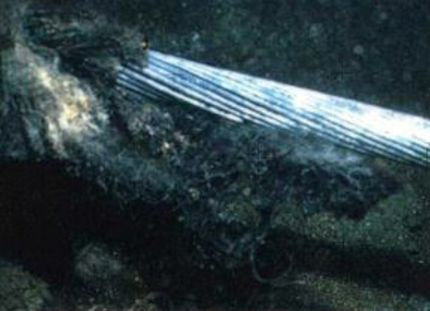
Repair of damaged cables means sending a repair ship to the location of the problem, splicing the cable, repairing it, and re-attaching the ends.
In shallow waters, this can be done by divers, but in deeper waters, this requires capturing the cable and hoisting it up to a ship to repair it.
Damaged cables can result in a loss of capacity, increased latency, or in the worst case, a halt of all communication activity. There is significant redundancy in paths, so even a major problem with a submarine cable doesn’t necessarily mean all traffic between two continents stops.
In the image above from Seaworks and Transpower NZ and the International Cable Protection Committee, you can see a submarine cable damaged by trawler gear.
People working together
About 99% of all intercontinental internet traffic goes over submarine cables. Though satellites are a great solution for edge connectivity onto the global internet, especially in locations that don’t have easy access to physical infrastructure, they don’t represent a significant amount of overall global capacity. The capacity and latency limitations of satellite communication technology mean that fiber optic submarine cables are the dominant method for moving large volumes of data worldwide.
Investment in the submarine cable infrastructure is strong, and work is being done to ensure data rates improve, security improves, and access to more parts of the world is built. However, the overall system of submarine telecommunications cables is less like a global public utility and much more like the global airline industry, with private airlines sharing the cost for airports.
Who owns the cables?
Years ago, submarine cables were first owned by telecommunication companies that would band together to form a consortium of all the parties interested in using the submarine cable. Over time and as the internet grew in the mid to late 90s, more companies saw the potential of investing in the infrastructure that enabled the global internet to take off.
It didn’t take long for countries around the world to recognize that submarine cables were becoming part of critical infrastructure for governments and the private sector. In recent years, even content providers like Google, Meta, and Amazon have become prominent investors in developing and installing new cable. In fact, the capacity added to the overall network of submarine cables by these private companies has far outpaced the growth of the traditional telecom providers.
Submarine cables are then each owned by various private investors, either large telecom carriers, content delivery providers, or investor groups. A few or many private organizations privately own about 99% of cables. About 1% of submarine cables are owned or owned in part by a government entity. These investors then form a conglomerate to operate and maintain a cable. Sometimes there are conflicts of interest, as is the case with countries that may not be on good terms.
However, remember that traffic doesn’t always need a direct route to reach its destination. Even in those situations when there isn’t a direct physical path between two countries, data can travel in a more circuitous route and still get to most destinations.
This consortium of owners and investors will contract repair services to private third-party companies that have the ships, staff, and resources to make repairs in the middle of the ocean very quickly. The number of total cable repair ships in service, either installing a new cable or repairing a cable, is surprisingly small at around 60.
Below is an image of a repair ship mending a damaged submarine cable connecting Malta and Sicily.
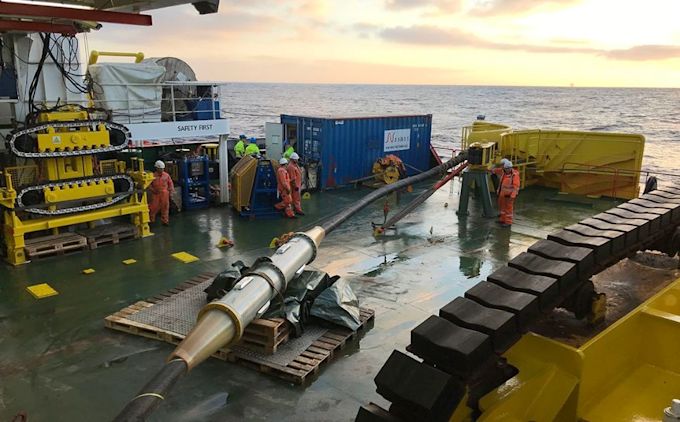
Submarine cable oversight
In the United States, “the Federal Communications Commission (FCC) and various other agencies are involved in the oversight of the submarine cables and/or other undersea activities that may impact submarine cable infrastructure.” When cable companies are from outside the US, “the FCC’s International Bureau grants licenses authorizing cable landing license applicants to own and operate submarine cables and associated landing stations in the United States.”
The International Cable Protection Committee was also formed in 1958 as a neutral body to establish standards for cable installation, maintenance, and protection. The ICPC monitors international treaties, various legislation, the installation of cable, and supports research initiatives to ensure that submarine cable interests are protected.
From the ICPC website:
The International Cable Protection Committee (ICPC) was founded in 1958 and its Membership comprises of governmental administrations and commercial companies that own or operate submarine telecommunications or power cables, as well as other companies that have an interest in the submarine cable industry—including most of the world’s major cable system owners and cable ship operators. The primary purpose of the ICPC is to help its Members to improve the security of undersea cables by providing a forum in which relevant technical, legal and environmental information can be exchanged.
Prime Activities of the ICPC:
- Promote awareness of submarine cables as critical infrastructure to governments and other users of the seabed
- Establish internationally agreed recommendations for cable installation, protection and maintenance
- Monitor the evolution of international treaties and national legislation and help to ensure that submarine cable interests are fully protected
- Liaison with UN Bodies
The economics of submarine cables
Ownership and investment
Because many countries depend on internet connectivity for a large portion of their GDP, and because many nation-state and military organizations around the world rely on submarine cables to function at all, the economics of submarine telecommunication cables is more complex than simply commercial supply and demand.
Submarine cables certainly provide the underlying mechanism for much of global commerce, but they also serve the public good in various ways. In fact, a World Bank study from 2014 indicates that “a 10% increase in broadband penetration results in a 1.38% increase in gross domestic product (GDP) growth in low and middle-income countries.”
Submarine cables are financed almost entirely with private money from companies worldwide. Their interest is to expand their ability to acquire and serve more customers, but working together in groups of investors means submarine cables are shared resources even among telecom competitors. The majority of the capacity is sold as annual leases, usually for 15 years as a standard term.
Cables cost upwards of $40,000 per mile, meaning a longer cable can easily run in the hundreds of millions of dollars. Recent trans-oceanic cable bids have reached upwards of $250-$300 million for trans-Atlantic and $300-$400 million for trans-Pacific. Though the cable and cable landing stations are themselves expensive, a significant part of the cost of the cable, at about 25%, is the marine installation which is paid for by the consortium of investors who share both the cost and the risk.
Cable installation and ongoing maintenance are done by third-party contractors hired by the consortium of investors/owners. SLAs for maintenance work can be surprisingly aggressive regarding response time, with a 24-hour response to a fault being very common. Actual repair may take much longer, of course. Cable maintenance ships and crews are specialized and, therefore, expensive. The various maintenance contractors compete on efficiency, speed, and cost. The majority of the capacity is sold as annual leases, usually for 15 years as a standard term.
Major submarine cable fabricators
- SubCom and Alcatel Submarine Networks are North America’s two main submarine cable fabricators.
- The main fabricator in China is HMN Technologies Co., Limited, which is majority owned by Shanghai-listed Hengtong Optic-Electric C Ltd.
- In Japan, the leading submarine cable fabricator is NEC. Its subsidiaries OCC Corporation and Sumitomo Electric Industries, Ltd. NEC has fabricated cables crossing waters in southeast Asia, the Pacific and Indian Oceans, the Mediterranean, and even the South Atlantic.
- The fabrication of a submarine cable is no small feat, and many other companies manufacture cables and their components, including Corning, General Cable, and NSW (now owned by Prysmian Group).
The future of submarine cables
SDM and Multicore
The compound annual growth of international bandwidth demand is expected to expand by 20-40% over the next several years. Clearly, global data usage is expected only to increase over the next few years. The growth of 5G mobile data, the expansion of the internet to underserved parts of the world, and the ever-increasing volume of content among data centers and to billions of consumers mean the need for increased submarine cable capacity is crucial to the growth of the internet and the global economy.
One technology designed to help meet this need is space division multiplexing or SDM. SDM increases the cable’s total capacity by increasing the number of independent spatial channels in the core. Not only does this result in higher capacity, but it also reduces power consumption. SDM basically adds more fiber pairs in a single cable.
Unlike SDM, multicore technology increases the number of parallel optical fiber cores per fiber pair.

From a technical perspective, multicore submarine cable technology is a big part of the future of submarine telecom cables. In 2021, NEC announced the completion of an uncoupled 4-core submarine fiber cable trial.
This new 4-core fiber can be installed at depths up to 8,000 meters and contain up to 32 individual fibers. This kind of new technology means the number of cores within the cable itself can be increased without increasing the overall diameter of the entire cable system.
With these new cables, a single cable system can increase its capacity significantly without significantly increasing the cost of the cable or its installation. And from an economic perspective, this will reduce the total cost per bit of data transfer.
Conclusion
Considering 75% of the world’s population is predicted to be connected to the internet (mainly by mobile devices) by 2025, the future of submarine cable technology and the submarine cable industry is very bright.
From the physics of light used to transmit data thousands of miles to the economics of consortiums of some of the largest companies on Earth, submarine cables are complex and now crucial to our global economy and access to information.
Worldwide telecommunications began in earnest in the mid-19th century, almost 200 years ago. This led to an unprecedented change in our human experience. Underpinned by nearly 1.5 million kilometers of submarine fiber optic cables, the internet has changed the world. And these cables, criss-crossing the ocean floor and touching continents and countries, go largely unnoticed by an entire planet that now relies on them for many daily activities.
Special thanks to Doug Madory from Kentik and Alan Mauldin from TeleGeography for their input and review of this article for accuracy.
